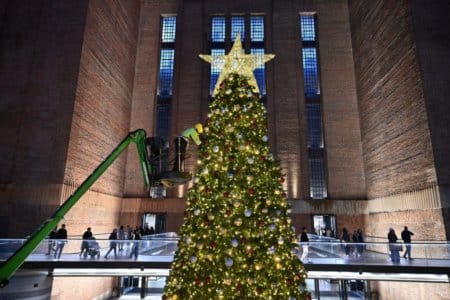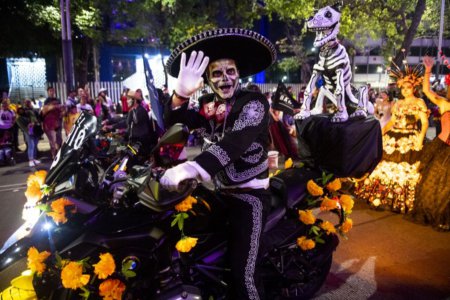
While New Year’s Eve celebrations are usually about listing resolutions, counting down to midnight and fireworks, this is not the case for every country.
Although all of us usher in the new year when the clock strikes 12, the New Year’s eves traditions leading up to it may differ — greatly.
New York has a giant ball drop on Times Square as people wish and hug loved ones, but elsewhere, things can get a little louder or spicier.
We travelled the world — virtually — to compile seven of the most unique and unusual New Year’s Eve traditions for you.
You could even try some of them. After all, when it comes to getting As and study visas approved, we need all the luck we can get.

Eating 12 grapes at midnight on New Year’s Eve is both a tradition and a superstition in Spain. Jaime Reina/AFP
The most unique and unusual New Year’s Eve traditions
Eating 12 grapes at midnight
A tradition that started in 1909 during an exceptionally good grape harvest has stuck around for many years.
While many around the world are counting down to New Year, Spaniards are busy scarfing down grapes.
Known as the 12 lucky grapes (one for each month of the year), this challenge is said to determine what the new year will bring.
From your speed to the taste of the grapes, this all plays a part in your luck for the new year.
Being able to finish all 12 grapes in time means you’ll have luck all year round, while the flavour of the grapes — whether sweet or sour — predicts what the year will bring.
So get a bunch of grapes and start making your wishes for the new year.
Denmark: Smashing plates
If you are in Denmark over New Year’s Eve, don’t be surprised if you wake up to a pile of smashed plates in front of your door.
A tradition originating from Greece, the Danes spend all year saving their unused plates just for this special occasion.
On Dec. 31, these plates are thrown at the front doors of family and friends as a sign of good luck.
While it sounds violent, this is actually a sign of good luck. In fact, the more plates you find outside your door, the more luck you’ll have in the New Year.

In South America, wearing red underwear on New Year’s Eve is said to bring love into the new year. Michal Cizek / AFP
South America: Wearing coloured underwear
South American countries, including Mexico, Bolivia and Brazil, all share one thing in common. They have one of the most unusual and unique New Year’s Ever traditions.
Here, they believe that your fortune for the new year is decided by the colour of your underwear. Those looking to find love in the new year will wear red underwear, while those hoping to get richer and luckier put on yellow underpants.
Want peace? Wear white.
Italy: Throwing furniture out of the window
Head to Italy and you’ll find people throwing old furniture out the window to symbolise them letting go of the past.
Be it cushions, blankets, old clothes, furniture, pots, and pans, Italians will gather all old items that no longer bring them joy and chuck it outside the window.
Ecuador: Burning scarecrows
Ecuador has one of the most lit New Year’s Eve traditions. They gather at midnight to set fire to scarecrows and any old photographs that symbolise bad memories.
These burnings are carried out to burn away all the bad from the previous year and make room for new memories. It’s a good time to burn those photos of you with your exes and ex-friends.

In Japan, a bell is rung 108 times on New Year’s Eve to get rid of the sins of the previous year. Al Bello / AFP
Japan: Ringing of the bell 108 times
In Japan, locals ring a bell 107 times leading up to New Year’s day, with the 108th rung when the clock strikes 12.
This Buddhist tradition is practised as a belief that the ringing of the bell will cleanse the sins from the previous year and bring good luck to all.
Scotland: The first step into the house
In Scotland, Jan 1 carries more significance than New Year’s Eve. Known to them as Hogmanay, this event has many traditions, but the most important is the first footing in the house.
Scots believe that to ensure good luck in the coming year, the first person to step into your house after midnight on New Year’s Day is meant to be a dark-haired male.
Traditionally, these men come bearing gifts of coal, salt, shortbread, and whiskey and are a symbol of peace and success.










